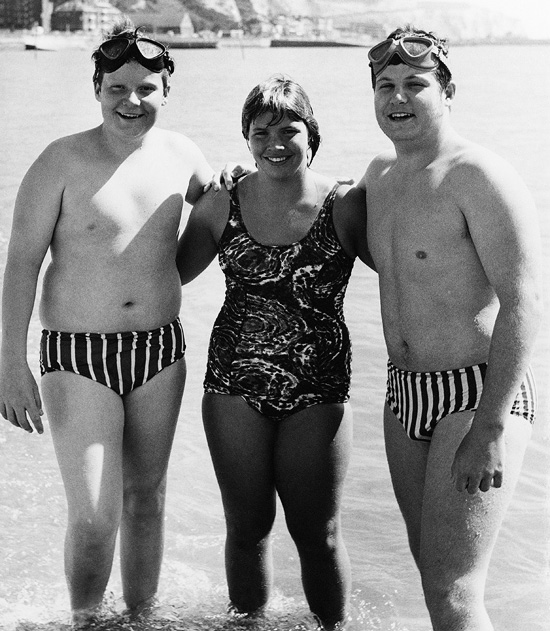I use Feedly to track the headlines of certain blogs, and let the bloggers do the work of digging up some of the info, such as new studies, for me. Here are some relevant ones:
Todd Becker
http://gettingstronger.orgVince Giuliano
http://www.anti-agingfirewalls.comRay Cronise
http://hypothermics.comWim Hof's blog doesn't have a feed:
http://www.icemanwimhof.com/wim-hof-blogHere's an example from it:
Behavioural training reduces inflammation
Research subjects suppress immune responses using physical conditioning.
May 5, 2014
"Kox suspects that the breathing techniques were the biggest contributor to suppressing inflammatory responses."
Nassim Taleb's book Antifragile: Things That Gain from Disorder isn't dedicated to the topic, but provides the sort of mindset and context for recognizing the utility of antifragilizing ancient practices.
Ancient practice often incorporated both heat and cold (and sometimes other therapies, like tummo meditation or clay), rather than focused solely on cold, as with the current popular trend in the blogosphere. It's rather odd that cold/heat therapy is often presented as though it were new or recently discovered, sometimes with fancy new names and weighed down with lots of time-consuming rhetoric about detailed explanatory theories.
Roman Baths: Frigidarium Caldarium and Tepidarium
> The Baths of Caracalla,
http://www.pbs.org/wgbh/nova/lostempires/roman/day.html> BBC's The Dark Ages: An Age of Light - What the Barbarians Did for Us (Episode 2)
Scandinavian Sauna + Cold Bath
http://en.wikipedia.org/wiki/Sauna
Cooling down is a part of the sauna cycle and is as important as the heating. Among users it is considered good practice to take a few moments after exiting a sauna before entering a cold plunge, and to enter a plunge pool by stepping into it gradually, rather than immediately immersing fully. In summer, a session is often started with a cold shower.[11][15]
Therapeutic sauna has been shown to aid adaptation, reduce stress hormones, lower blood pressure and improve cardiovascular conditions.[16][17][18][19][20][21]
Hot bathing reduces body fat: Effects of a comprehensive intervention program, including hot bathing, on overweight adults: a randomized controlled trial. Geriatr Gerontol Int. 2013.
http://www.ncbi.nlm.nih.gov/pubmed/23095006Swimming To Antarctica
American Swimmer Spends 30 Minutes In Water Cold Enough To Kill
http://www.cbsnews.com/news/swimming-to-antarctica-12-02-2003/
Lynne Cox is an American woman who's among the best ocean swimmers of our time. But there's something else about her that you may find hard to believe.
Science doesn't fully understand it, but she survives – she even thrives - in water that is cold enough to kill. It is so remarkable that researchers have been trying to figure out how she does it for 30 years.
As correspondent Scott Pelley first reported in 2003, when you combine her unique talents with a stubborn streak, there is only one thing left to do - try to swim a mile in the coldest water on earth. ...
Professor Bill Keatinge of the University of London, a pioneer in the study of hypothermia, brought Cox to London for experiments in his lab.
"We were able to confirm that she can maintain stable body temperature with her head out of the water and in water temperatures as low as 44 Fahrenheit," he said. ...
Keatinge thinks Cox has somehow trained her body to keep most of her blood at her body's core and away from the skin where it's exposed to the cold. The blood stays warmer. But there is something else — call it her natural insulation.
"She's got an extremely even fat layer going right down the limbs and it's an ideal setup," he says.
Cox herself thinks this is the key to her success: "If you look at the marine mammals in Antarctica, the whales, the walruses, the seals all have body fat to stay warm. Their blubber is very dense whereas mine will be more like a cotton sweater. But I'm not going to be in as long as they are."
...
The greatest danger to Cox is when she gets out of the water. Because she is no longer moving swiftly, her temperature plunges and the cold begins to assault her heart. In half an hour, she manages to sit up, but it's a struggle. It was only a practice swim, and she has never been this bad off.
In time, she warms, but she's paid a price. Her feet and hands are numb. It's nerve damage and it could be lasting.

Cox takes a break during her training for an English Channel crossing in the early 1970s. She is flanked by brothers Dick and Bill Crowell of Westport, Conn., who also were training to make their bid. Dick was 15 at the time, and Bill 16. Hulton Archive/Getty Images
Body fat and muscle help thicker people stay warmer in cold weather/water:
http://www.weather.com/health/do-fat-people-stay-warmer-cold-weather-thin-people-20140103There is "good" body fat as well as "bad" body fat. Cold therapy helps generate and activate more of the "good" brown adipose tissue and reduce the "bad" body fat:
http://www.innerfire.nl/brown-adipose"Wim produces the same amount of Brown adipose and in some cases even more than young adults."
http://www.wimhoffoundation.com/applying-the-wim-hof-method"The [Wim Hof Method] study also indicated that the amount of brown fat, which depends on the exposure to cold, can be increased"
http://wholehealthsource.blogspot.com/2013/07/brown-fat-its-big-deal.htmlUnfortunately, because of the extreme phobia in the USA regarding both body fat and fat in food, the topic of good body fat rarely gets covered. The desire for thinness, often at the expense of health, fertility, and vigor (and even at times contributing to eating disorders like anorexia), arose in the USA relatively recently, largely with the flapper era.
